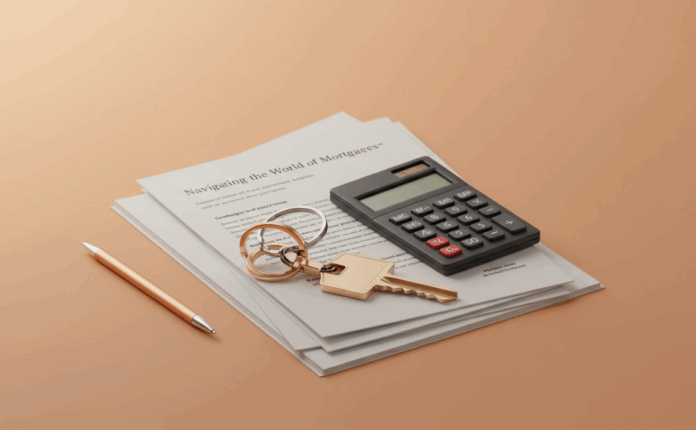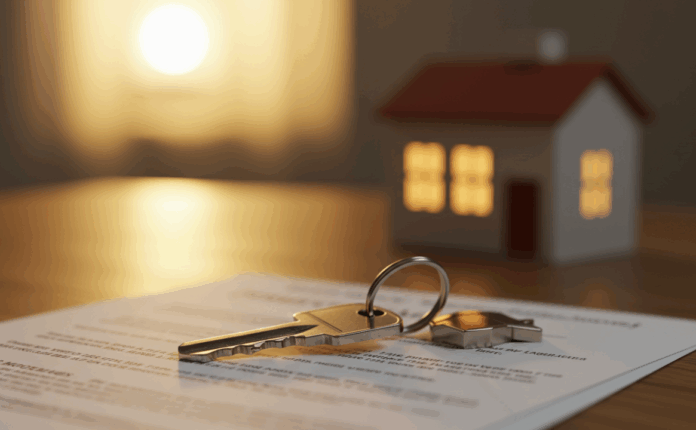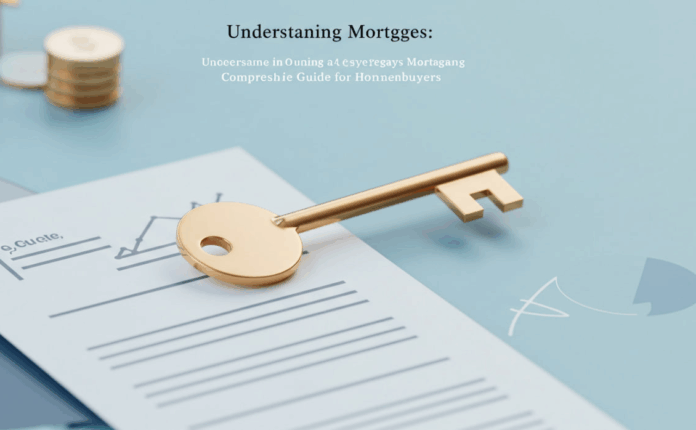Navigating the world of mortgages can feel overwhelming, especially for first-time homebuyers or those looking to refinance. A mortgage is more than just a loan; it’s a long-term financial commitment that can shape your financial future. This guide breaks down the essentials of mortgages, offering practical insights and actionable advice to help you make informed decisions.
What Is a Mortgage?
A mortgage is a loan specifically designed to help you purchase a home. It’s secured by the property itself, meaning the lender can take possession of the home if you fail to repay the loan. Mortgages typically involve monthly payments that cover the principal (the amount borrowed), interest, and sometimes additional costs like property taxes and insurance.
Key Components of a Mortgage
- Principal: The original amount you borrow to buy the home.
- Interest: The cost of borrowing, expressed as a percentage of the loan.
- Term: The length of time you have to repay the loan, often 15, 20, or 30 years.
- Escrow: A portion of your monthly payment that covers property taxes and homeowners insurance, held by the lender until due.
Understanding these components helps you evaluate mortgage offers and choose one that aligns with your financial goals.
Types of Mortgages
There are several mortgage types, each suited to different financial situations and goals. Here’s a breakdown of the most common options:
Fixed-Rate Mortgages
With a fixed-rate mortgage, your interest rate remains constant throughout the loan term. This predictability makes budgeting easier, as your monthly payment won’t change, even if market rates rise.
- Best for: Those who value stability and plan to stay in their home long-term.
- Pros: Predictable payments, protection against rising interest rates.
- Cons: Higher initial rates compared to adjustable-rate mortgages.
Adjustable-Rate Mortgages (ARMs)
ARMs start with a lower interest rate for an initial period (e.g., 5 or 7 years), after which the rate adjusts periodically based on market conditions. These are often referred to as 5/1 or 7/1 ARMs, indicating the initial fixed period and adjustment frequency.

- Best for: Buyers who plan to sell or refinance before the adjustable period begins.
- Pros: Lower initial payments, potential savings if rates stay low.
- Cons: Risk of higher payments if interest rates rise.
Government-Backed Mortgages
These loans are insured by government agencies, making them accessible to borrowers with lower credit scores or smaller down payments.
- FHA Loans: Backed by the Federal Housing Administration, these require as little as 3.5% down and are ideal for first-time buyers.
- VA Loans: Available to veterans and active-duty service members, these often require no down payment and have competitive rates.
- USDA Loans: Designed for rural homebuyers with low to moderate incomes, these offer zero-down-payment options.
Jumbo Mortgages
Jumbo loans exceed the conforming loan limits set by government-sponsored enterprises (e.g., $766,550 in most U.S. areas in 2025). They’re used for high-value properties but often require higher credit scores and larger down payments.
- Best for: Buyers purchasing expensive homes in competitive markets.
- Pros: Access to larger loan amounts.
- Cons: Higher interest rates, stricter qualification criteria.
How to Choose the Right Mortgage
Selecting a mortgage involves assessing your financial situation, goals, and risk tolerance. Here are steps to guide your decision:
1. Evaluate Your Finances
- Credit Score: A higher score (typically 740+) unlocks better interest rates. Check your score and address any issues before applying.
- Debt-to-Income Ratio (DTI): Lenders prefer a DTI below 43%. Calculate yours by dividing monthly debt payments by gross monthly income.
- Down Payment: Aim for at least 20% to avoid private mortgage insurance (PMI), though some loans allow less.
2. Compare Lenders
Shop around with banks, credit unions, and mortgage brokers. Request loan estimates to compare interest rates, fees, and closing costs. Even a 0.25% difference in rates can save thousands over the loan’s life.
3. Consider Your Plans
- Short-Term Stay: An ARM or shorter-term loan may save money if you plan to move within a few years.
- Long-Term Stay: A fixed-rate mortgage offers stability for those staying put for decades.
4. Factor in Total Costs
Beyond the interest rate, consider:
- Closing Costs: Typically 2-5% of the loan amount, covering appraisals, title fees, and more.
- PMI: Required for conventional loans with less than 20% down, adding to monthly costs.
- Maintenance and Taxes: Homeownership includes ongoing expenses that impact affordability.
Tips for Getting the Best Mortgage Deal
- Improve Your Credit: Pay down debt and avoid new credit applications before applying.
- Get Pre-Approved: A pre-approval letter shows sellers you’re a serious buyer and clarifies your budget.
- Lock Your Rate: If rates are favorable, lock in your rate to protect against increases during the loan process.
- Negotiate Fees: Some closing costs are negotiable—ask lenders to waive or reduce them.
Common Mistakes to Avoid
- Overborrowing: Just because you qualify for a large loan doesn’t mean you can afford it. Stick to a budget that leaves room for emergencies.
- Ignoring Total Costs: Focusing solely on the interest rate can overlook high fees or PMI.
- Skipping Pre-Approval: Without pre-approval, you risk losing your dream home to a better-prepared buyer.
Refinancing: When Does It Make Sense?
Refinancing involves replacing your existing mortgage with a new one, often to secure a lower rate, shorten the loan term, or tap into home equity. Consider refinancing if:
- Interest rates have dropped significantly (at least 0.5-1% below your current rate).
- Your credit score has improved, qualifying you for better terms.
- You want to switch from an ARM to a fixed-rate loan for stability.
However, refinancing comes with closing costs, so calculate the break-even point (when savings outweigh costs) to ensure it’s worthwhile.
FAQ
What credit score do I need for a mortgage?
Most lenders require a minimum score of 620 for conventional loans, but FHA loans may accept scores as low as 580 with a 3.5% down payment. Higher scores (740+) secure better rates.
How much should I save for a down payment?
Aim for 20% to avoid PMI on conventional loans, but programs like FHA or VA allow 3.5% or even 0% down. Ensure you have enough savings for closing costs and emergencies, too.
Can I get a mortgage with bad credit?
Yes, options like FHA loans cater to borrowers with lower credit scores. Improving your score before applying can still save you money.
How long does the mortgage process take?
Typically, 30-45 days from application to closing, depending on your financial readiness, the lender’s efficiency, and the property’s appraisal process.
Should I choose a 15-year or 30-year mortgage?
A 15-year mortgage offers lower interest rates and faster payoff but higher monthly payments. A 30-year mortgage is more affordable monthly but costs more in interest over time. Choose based on your budget and goals.



